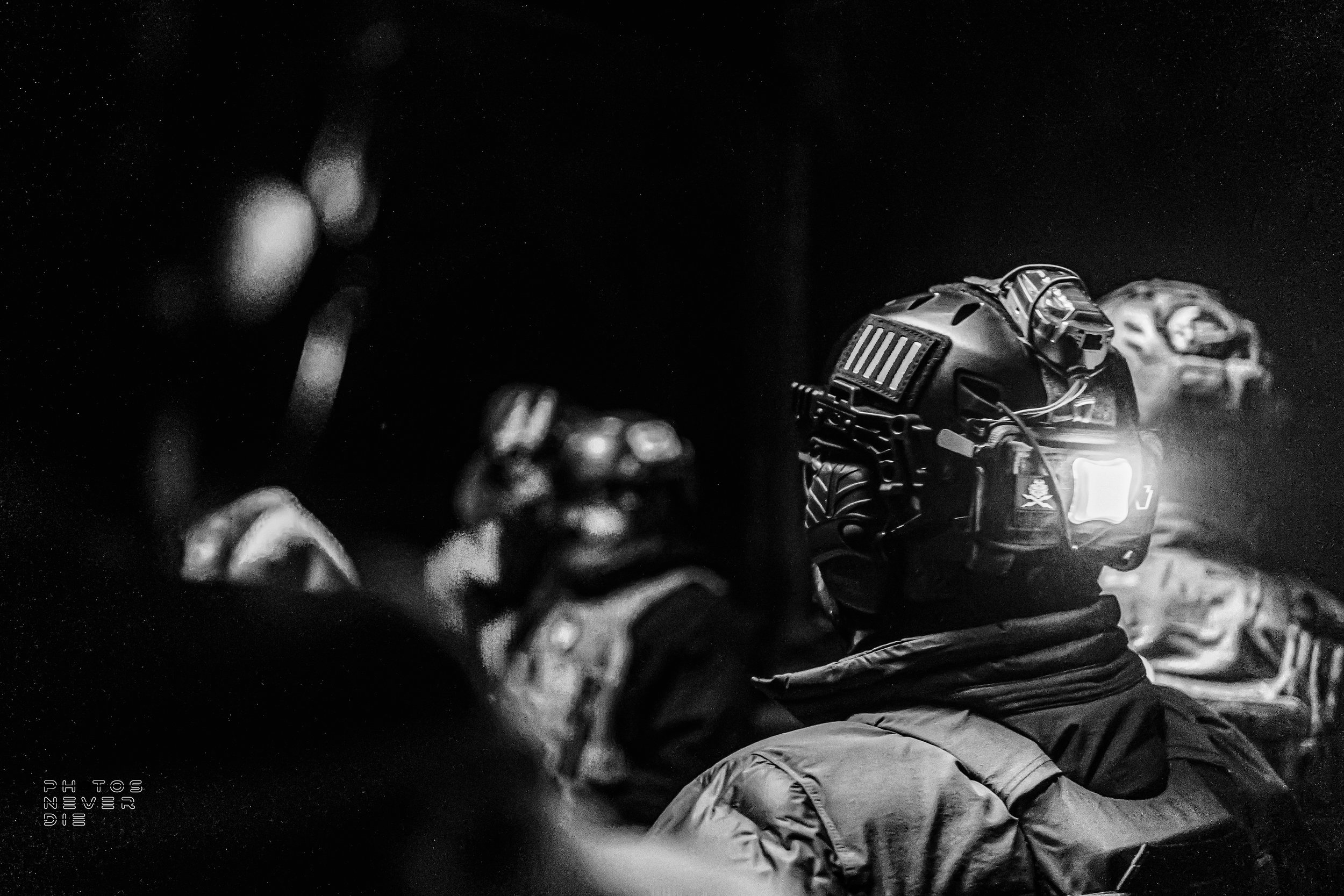
After eight years of service in the Army as an Infantryman…
I transitioned directly into security contracting, serving as a designated defensive marksman. A few rotations in, I began experiencing serious health issues related to TBI, PTS, and musculoskeletal disorders that developed over a decade of wear and tear. The life I had built—and the camaraderie that came with it—came to an abrupt end. I found myself unemployed and living with my father, struggling to function for nearly two years.
During that period, I battled severe depression and anxiety—challenges I continue to face today. Isolated and overwhelmed, I knew I needed something to break the cycle. I needed a purpose—something that could shift my focus away from my physical and mental health.
That’s when I picked up a camera…
I don’t remember exactly what prompted the decision. I had only a passing interest in photography at the time. But once I began teaching myself the technical and creative elements, something clicked. Photography became more than a distraction—it was a source of fulfillment. Even the earliest images, flawed as they were, gave me a deep sense of accomplishment. It became a process of creation, discovery, and growth that continues to this day.
On my worst days, I grab my camera and seek out light—both literally and metaphorically. Some of my best work has come from the darkest moments. The act of photographing brings clarity and calm. Printing and displaying those images brings pride and purpose.
Photography, to me, is the art of finding beauty in the world and capturing it through your own lens. It’s about manipulating light to tell your story—and in doing so, reclaiming your own sense of self.

Art can be a powerful tool for healing traumatic experiences…
It allows individuals to express and process their emotions safely and creatively. Traumatic experiences can be difficult to articulate through words alone, and art provides an alternative way of communicating and working through those experiences.
Engaging in creative activities can help reduce stress, increase self-awareness, and promote a sense of control and agency. Furthermore, art therapy, which is a form of therapy that uses art-making as a means of communication and self-exploration, has been shown to be effective in treating individuals who have experienced trauma. Art therapy can help individuals identify and express difficult emotions, develop coping strategies, and build a sense of resilience.
Overall, art can provide a safe and supportive space for individuals to process and heal from traumatic experiences. It allows individuals to express themselves in a way that is unique to them and can be a valuable addition to traditional forms of therapy.

Here are some ways that art therapy can be used to treat traumatic experiences:
Expressing emotions: Art therapy allows individuals to express their emotions in a safe and creative way. This can be especially helpful for individuals who struggle to verbalize their experiences and emotions.
Reducing anxiety: Creating art can be a calming and meditative activity, which can help reduce feelings of anxiety and stress. This can be especially helpful for individuals who experience hyperarousal symptoms such as flashbacks and nightmares.
Developing coping strategies: Art therapy can help individuals develop coping strategies for managing their PTSD symptoms. For example, individuals may use art to create a visual representation of their triggers, which can help them better understand and manage their reactions to those triggers.
Building self-esteem: Art therapy can help individuals build their self-esteem by providing a sense of accomplishment and pride in their creations. This can be especially helpful for individuals who have experienced trauma and may struggle with feelings of shame and self-blame.
Providing a sense of control: Creating art provides individuals with a sense of control over their environment and their experiences. This can be especially important for individuals who have experienced trauma, as the trauma can leave them feeling powerless and out of control.
Overall, art therapy can be a valuable and effective treatment for individuals with PTSD. It can help individuals process their experiences, reduce anxiety and stress, develop coping strategies, build self-esteem, and regain a sense of control over their lives.
